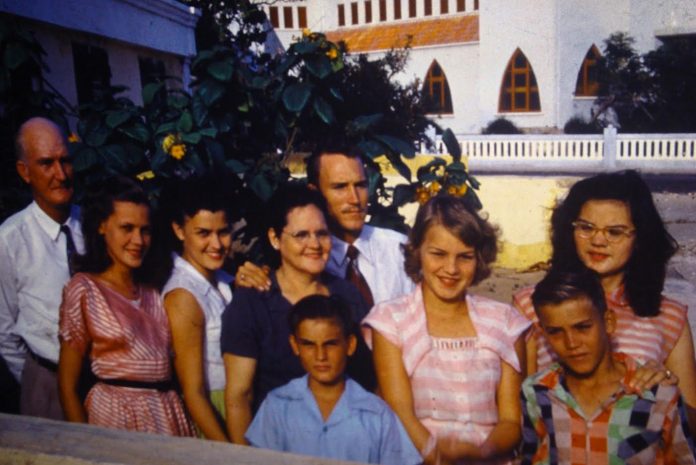In this episode we want to give you an idea of the particularity of maternal inheritance and how with the analysis of mitochondrial DNA (mtDNA) you will be able to know the personal genetic history of your family on the maternal side.
All children of the same mother have identical mitochondrial DNA. The sons of this woman’s daughters also have the same mtDNA, and so on. mtDNA is inherited only from mother to child.
In the picture we can observe an Aruban family from 1950 of over seven generations. Eight individuals (mother and children) that carry a Native American Mt DNA and a European nuclear DNA. Where some of them look more white, other are mixed and yet some show mongoloid features of their native ancestors.
The mtDNA test not only reveals the origin of your maternal ancestors, but also those that you are related to on the maternal side. The results of your mtDNA test may be used for maternal kinship searches around the world or for regional investigations. This research is about knowing if people with the same or similar place of origin are biologically related.
At present, these kinship searches are available to everyone through the Internet. We can start a project on maternal kinship or also subscribe to an existing one. It is free and very suitable if you want to find relatives on the mother’s side her mother and so one in history.
A mitochondrial DNA test shows you your haplogroup (your tribe in prehistory) and which ancient people (Celts, Vikings, Jews, Native American etc.) your ancestors belonged to. In addition, you will also learn which region your profile is typical of and where your ancestors lived during the Middle Ages (500 AD to 1500 AD). Depending on the genetic profile, a definitive assignment is not possible. With a nuclear DNA genealogy you will also find “genetic relatives”, that is, people with whom you share ancestors on your fathers side. By exchanging information with your “genetic relatives” about, for example, the family tree, you can broaden your knowledge about the history of your paternal ancestors.
However keeping our attention on the Mt-DNA results specifically of your own origin, you can also investigate the gene pool of a certain region. So you can find out which families come from the same region, how closely intertwined and related they are, and which haplogroups and concequenlty, what Haplo types are still present under our native population. These results should not always or only be compared with entries in a family tree, but also possibly with historiographical sources. For expmle; Was this region a Caquetio settlement? Find out what traces these peoples have left in their genes which are still present in the current population. Perhaps this home settlement represents an important part of our forgoten story.
If you love Aruba its origins and its cultural heritage, be part of the exclusive visitors of Etnia Nativa: a cozy museum/home.
Etnia Nativa a private residential houses collections of native art, archaeological artifacts and historic furniture, while the facilities themselves are the result of the transformation of recycled materials. Meet Anthony Croes, our columnist at his home! Book your visit Whatsapp + 297 592 2702- or mail: etnianativa03@gmail.com
















